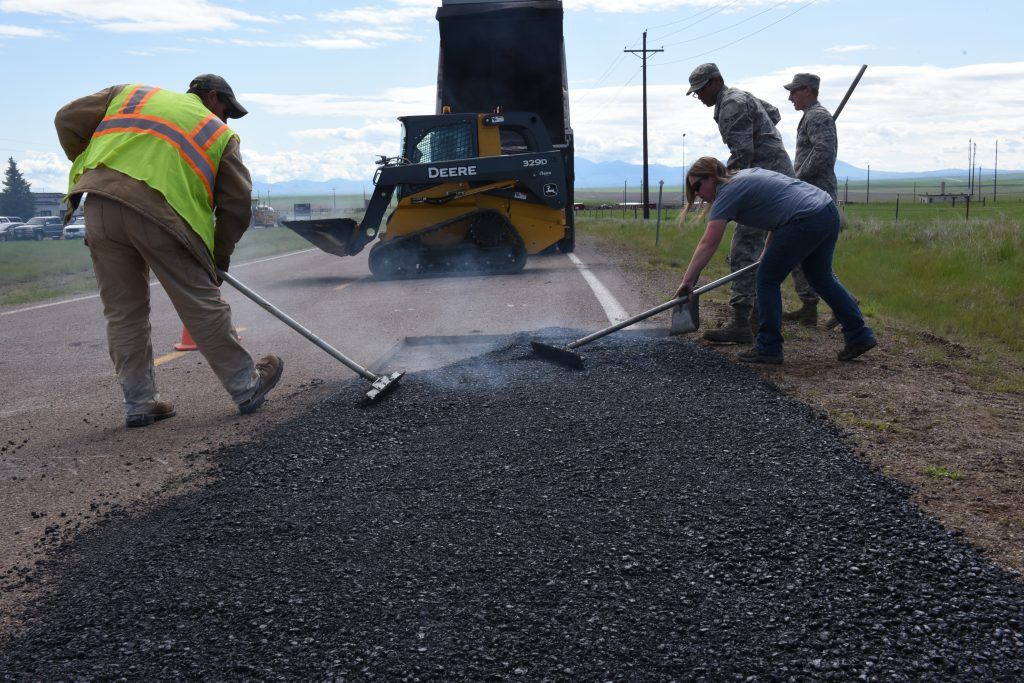Hot Mix Asphalt Paving: Redefining Business Building Landscapes
Hot Mix Asphalt Paving: Redefining Business Building Landscapes
Blog Article
Opening the Keys of Hot Mix Asphalt Technology
Checking out the midsts of hot mix asphalt modern technology discovers a globe where meticulous procedures and precise solutions assemble to form our roadways and facilities. The combination of accumulations, binders, and fillers isn't just a building and construction job yet a critical orchestration of durability and efficiency. As we peer right into the detailed dancing of elements, a tapestry of durability and sustainability unravels. Yet what lies underneath this surface of asphaltic mastery, and what keys wait to be introduced in the realm of paving innovations?
Importance of Warm Mix Asphalt
Hot Mix Asphalt plays an important duty in modern-day framework development due to its resilience and cost-effectiveness. As the most typically utilized paving material for roadways, highways, and auto parking whole lots, Warm Mix Asphalt uses an array of advantages that add to its value in building and construction tasks.
The durability of Warm Mix Asphalt originates from its make-up, which consists of accumulations, binder, and filler products that are very carefully chosen and blended to meet particular performance requirements. This precise mix causes a solid and versatile pavement that can endure regular use without significant wear and tear. Warm Mix Asphalt is 100% recyclable, more improving its sustainability and environmental benefits. On the whole, the relevance of Hot Mix Asphalt in infrastructure growth can not be underrated, as it remains to be a cornerstone of contemporary building practices.
Parts of Asphalt Mixes
The make-up of asphalt mixes consists of very carefully picked accumulations, binder, and filler products that are essential for accomplishing certain efficiency demands. Accumulations are the primary component of asphalt mixes, offering stamina and security. The binder, commonly asphalt or asphalt concrete, holds the accumulations with each other and gives adaptability and durability to the mix.
The combination and proportion of these components play a considerable function in identifying the high quality and performance of the asphalt mix. Designers carefully design the mix to meet specific requirements, considering factors like traffic volume, environment problems, and sidewalk life expectancy. Appropriate choice and balancing of aggregates, binder, and fillers are important for creating durable, durable asphalt sidewalks.
Combining and Production Techniques

Once the aggregates are picked, the binder, usually asphalt concrete, is contributed to bind the products together. The binder's high quality and amount dramatically influence the mix's adaptability, strength, and resistance to ecological elements. Additionally, fillers like hydrated lime or Rose city concrete may be integrated to improve details attributes of the asphalt websites mix, such as its workability or moisture resistance.
During production, the accumulations and binder are warmed, commonly between 250-325 ° F(121-163 ° C ), to assist in mixing and ensure correct finish of the aggregates. The mixing procedure should be extensive to achieve an uniform blend that promotes the wanted efficiency qualities of the asphalt. Various strategies, such as batch blending or drum mixing, are used to accomplish consistent and high-grade asphalt mixes for building and construction projects.
Variables Impacting Asphalt Efficiency
Aspects influencing asphalt efficiency encompass a variety of variables that impact the longevity, durability, and total high quality of asphalt sidewalks. One essential variable is the quality of products used in the asphalt mix. The type and resource of aggregates, the binder top quality, and the additives all play a considerable role in figuring out the efficiency of site link the asphalt pavement. The gradation of accumulations is essential as it influences the mix's resistance, workability, and security to breaking and rutting.

Style considerations, such as sidewalk density and water drainage, are essential in guaranteeing the long-lasting performance of the asphalt pavement. By very carefully thinking about these variables, engineers and specialists can enhance asphalt performance and enhance the solution life of sidewalks.
Lasting Practices in Asphalt Innovation

WMA permits for the production and positioning of asphalt blends at lower temperature levels compared to standard hot-mix asphalt, resulting in lowered energy intake and greenhouse gas emissions. The use of permeable asphalt blends can help minimize stormwater runoff problems by permitting water to infiltrate with the sidewalk and right into the ground, promoting natural water purification and recharge processes.
Final Thought
To conclude, hot mix asphalt technology plays an important duty in modern-day framework growth due to its resilience and cost-effectiveness. By very carefully stabilizing parts, using correct blending methods, and taking into consideration numerous variables, designers can develop high-grade asphalt blends that hold up against rush hour lots and extreme climate problems. Accepting sustainable practices, such as using recycled materials and warm-mix modern technologies, further enhances the ecological kindness of asphalt innovation.
Mixing and manufacturing strategies in hot mix asphalt technology involve the specific mix and processing of accumulations, binder, and fillers to produce a resilient and high-performance asphalt mix.Factors affecting asphalt performance incorporate an array of variables that affect the resilience, long life, and general quality of asphalt sidewalks. Sustainable techniques in asphalt modern technology include numerous efforts aimed at minimizing the environmental influence of asphalt production and paving procedures. By integrating reclaimed asphalt sidewalk (RAP) and recycled asphalt shingles (RAS) right into new asphalt blends, the industry can dramatically decrease the intake of raw materials and power, while also lowering landfill waste.
WMA permits for the production and positioning of asphalt blends at lower temperature levels compared to standard hot-mix asphalt, resulting in reduced power intake see here now and greenhouse gas discharges.
Report this page